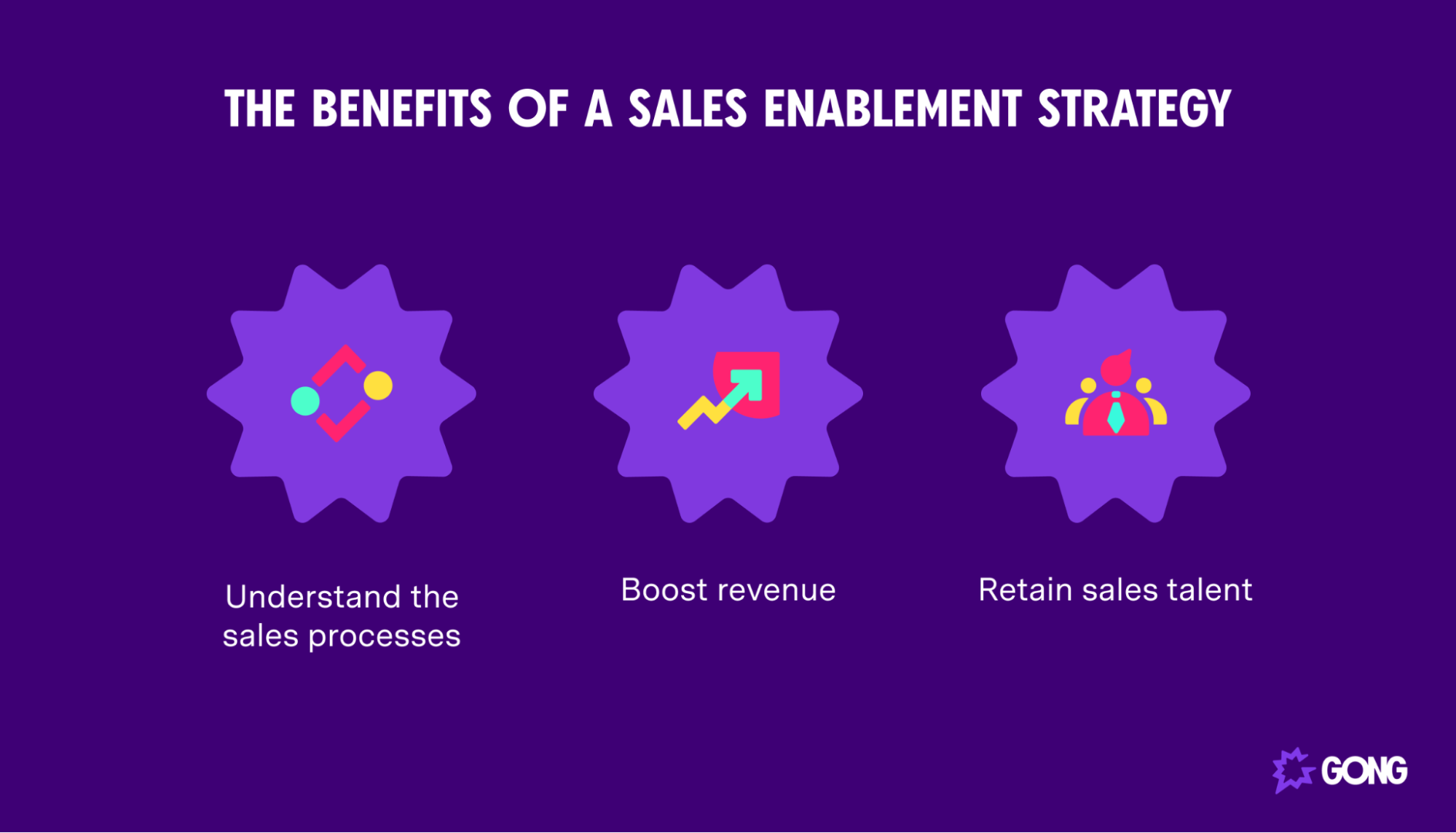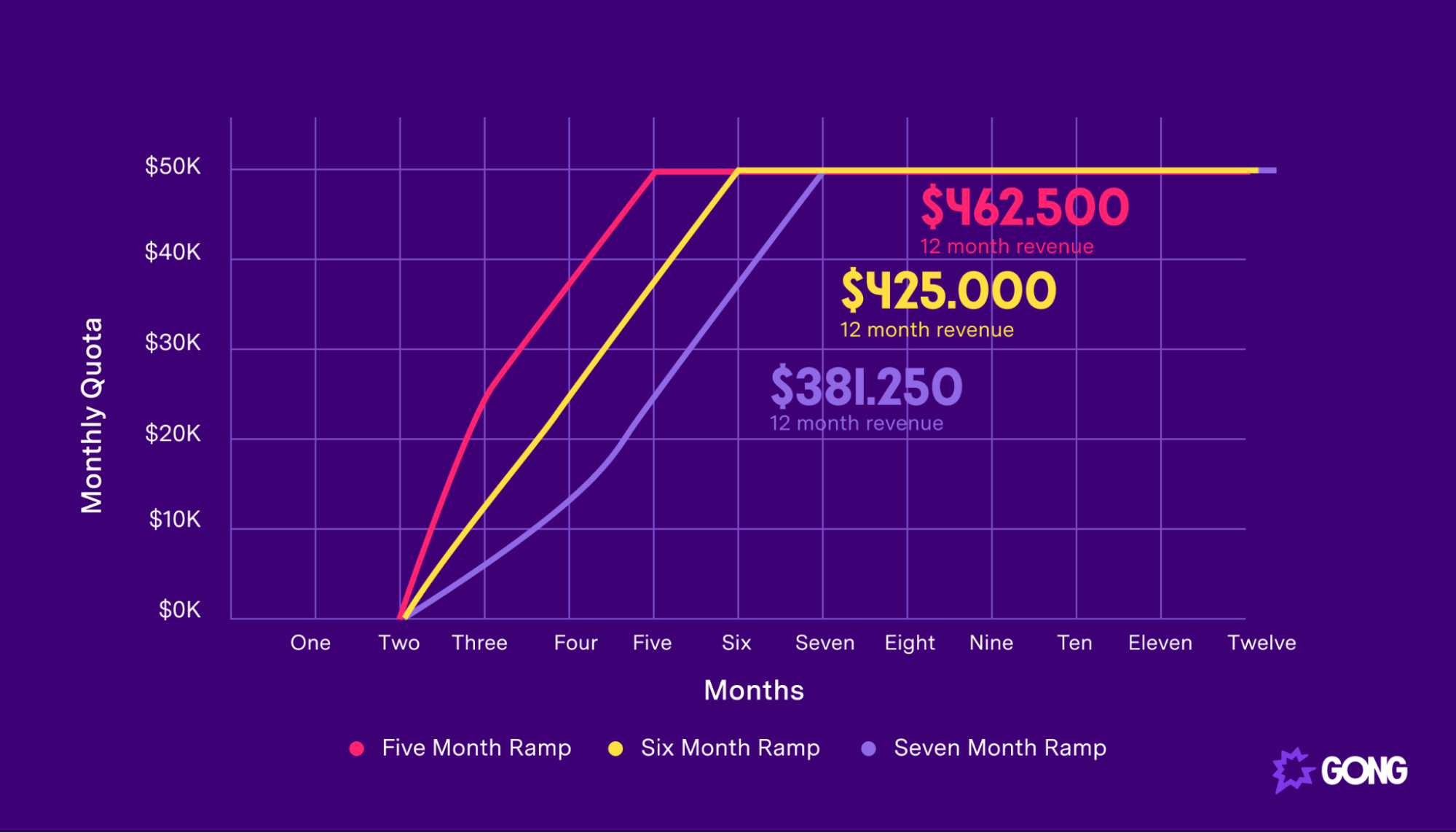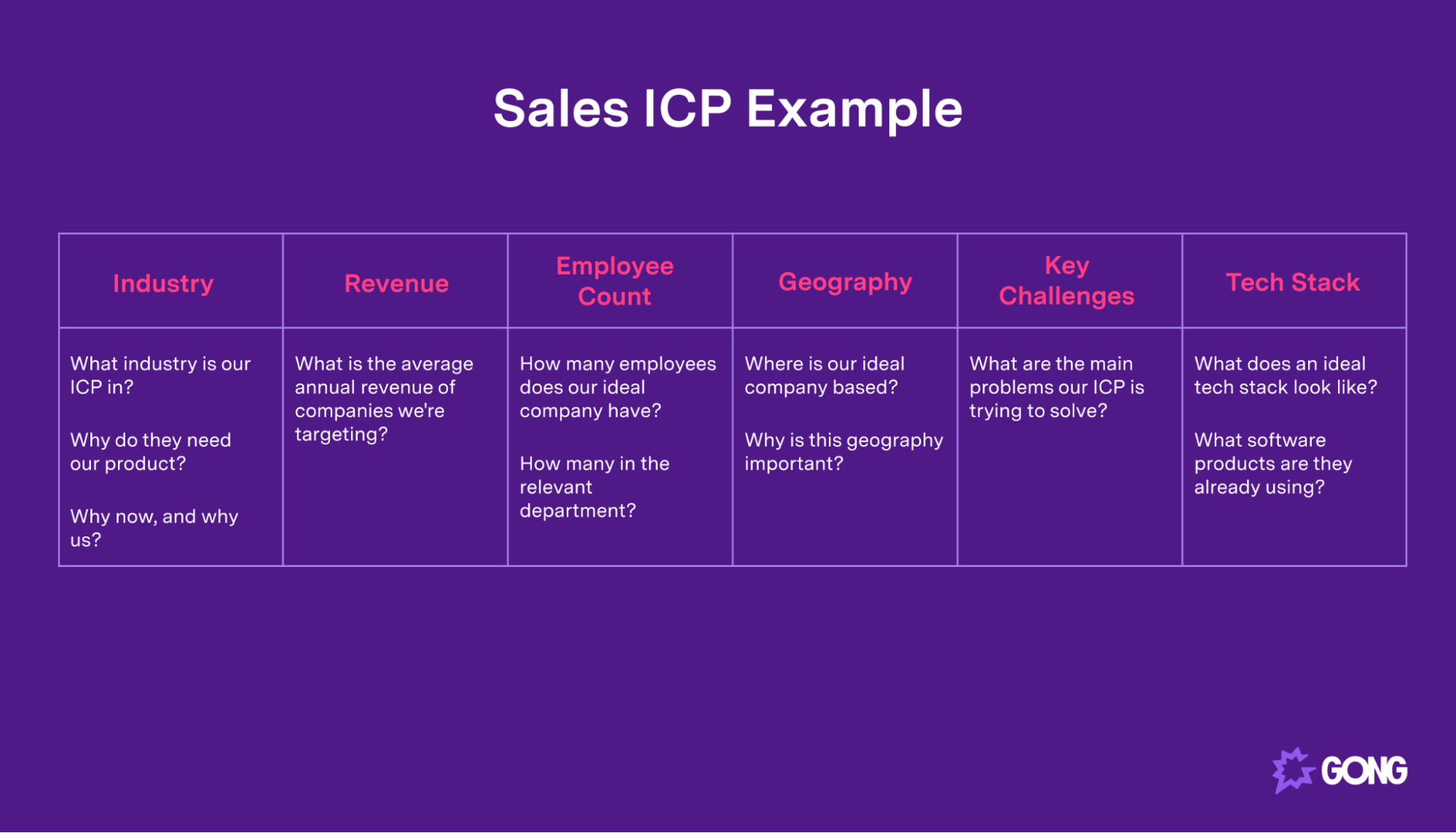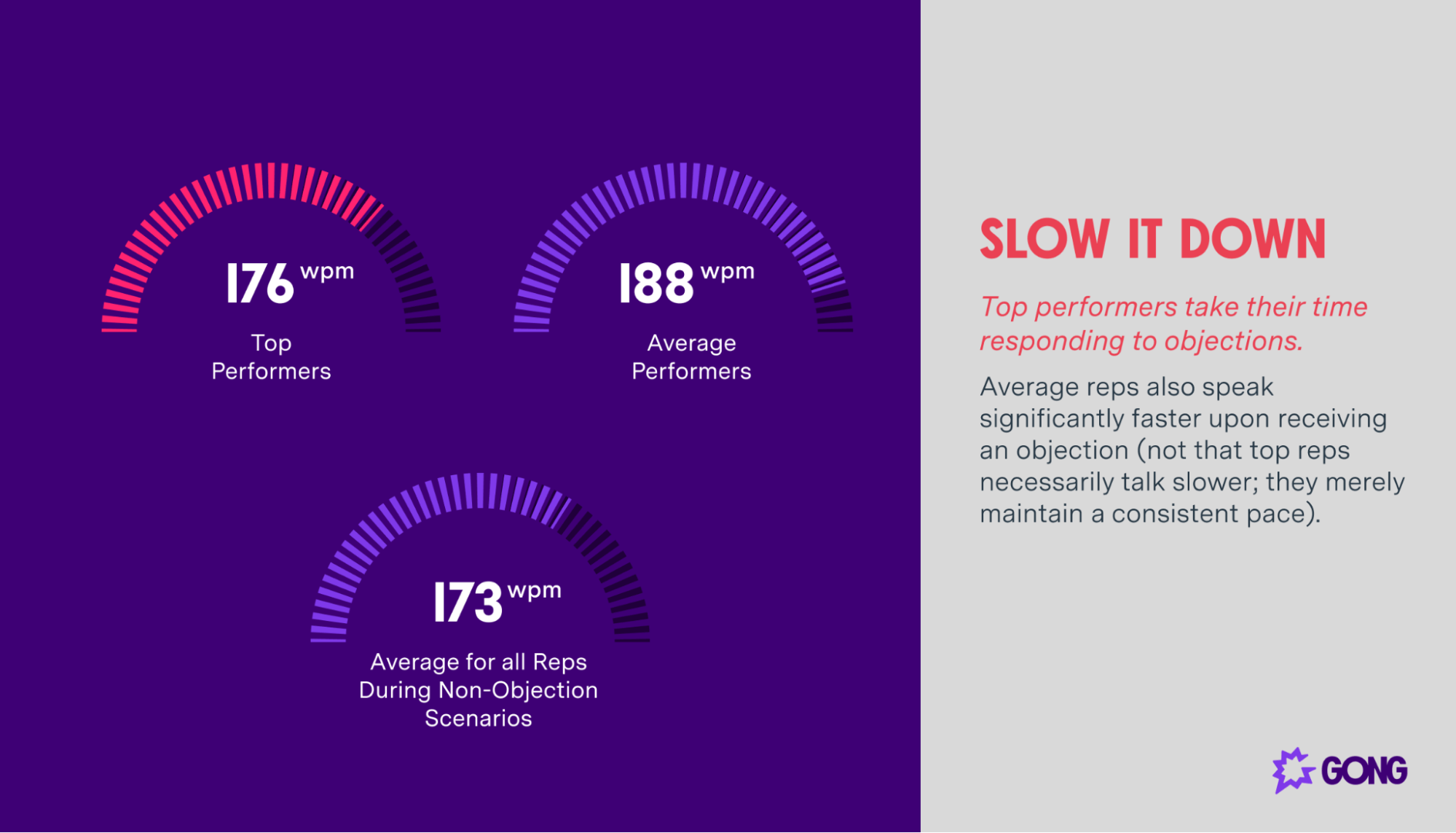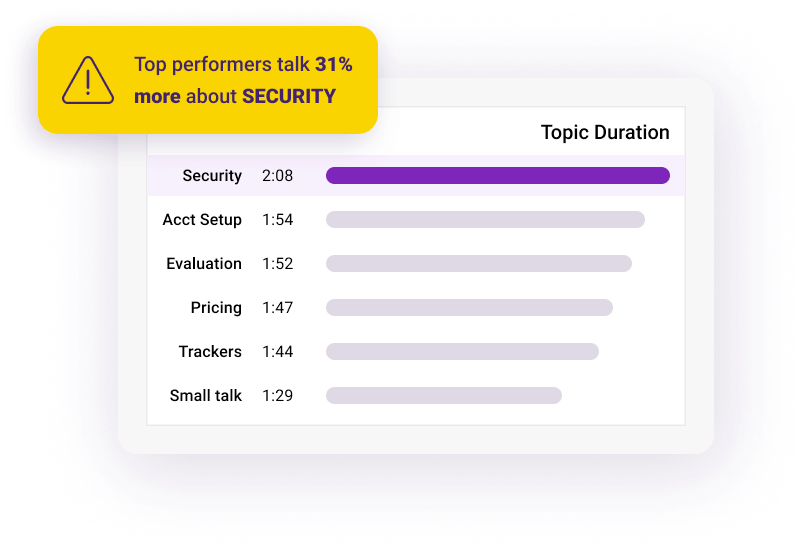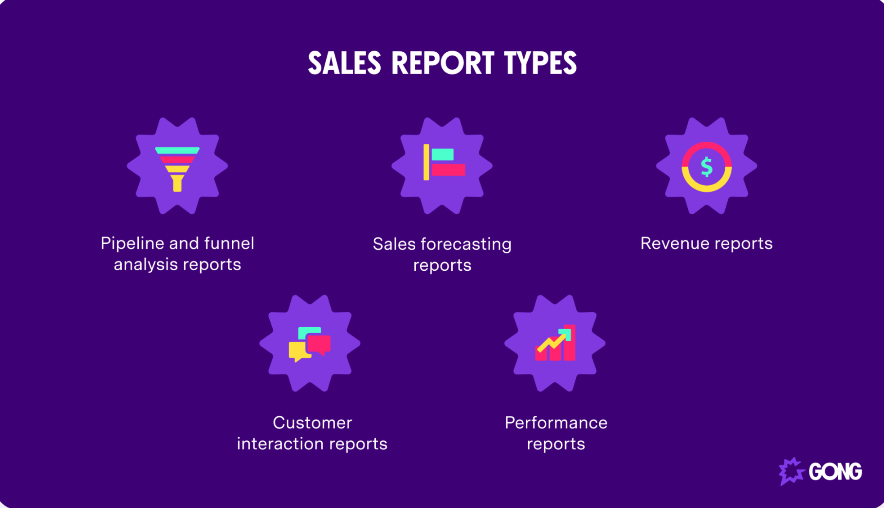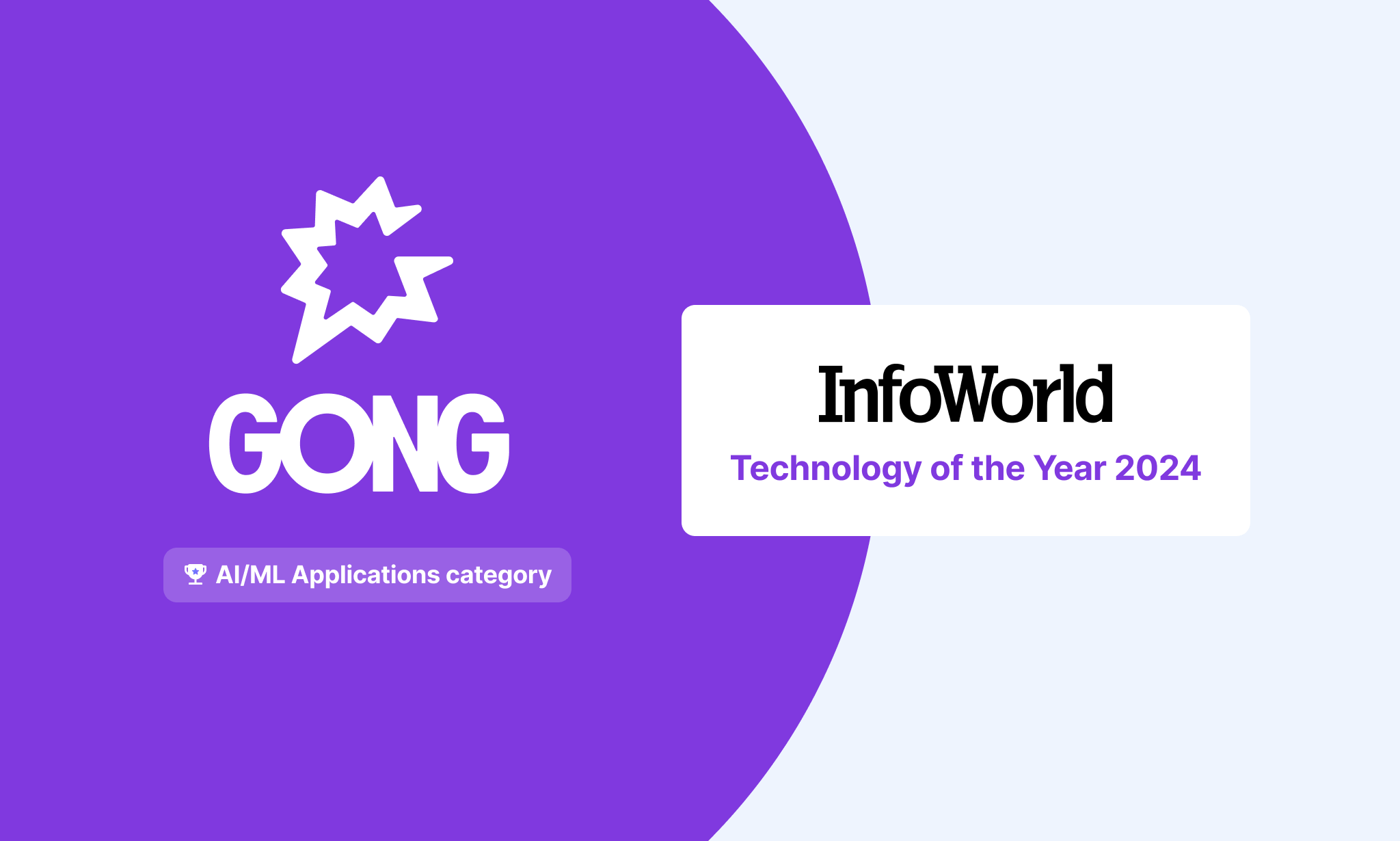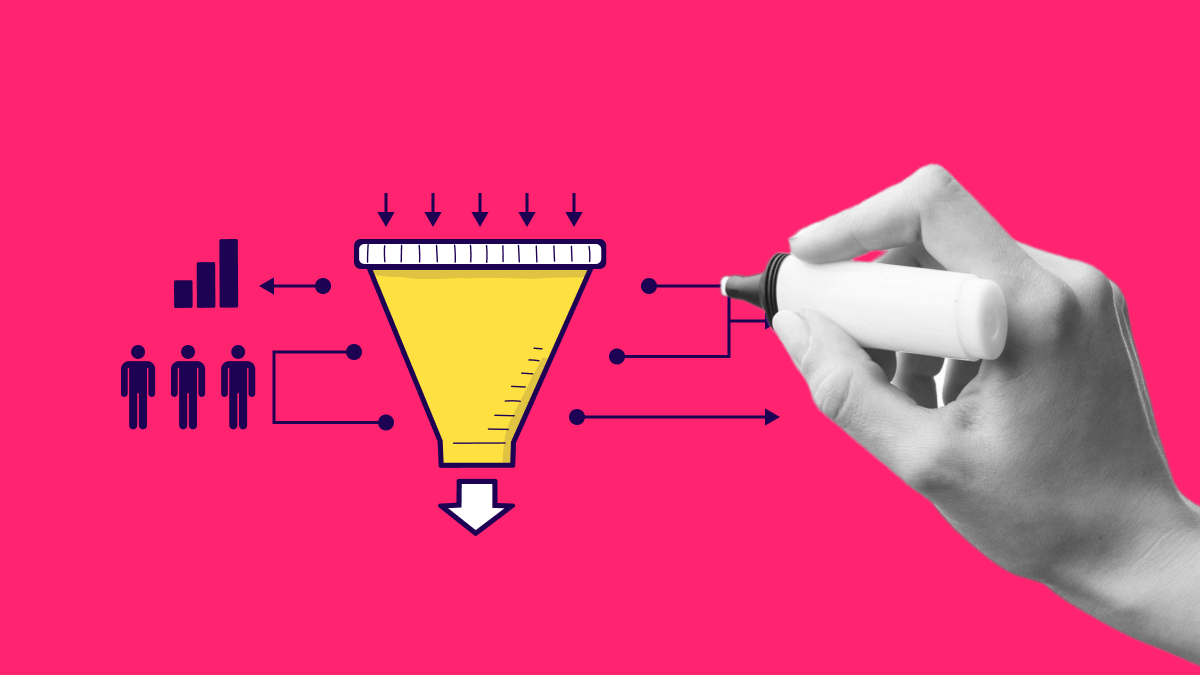How to build a winning sales enablement strategy
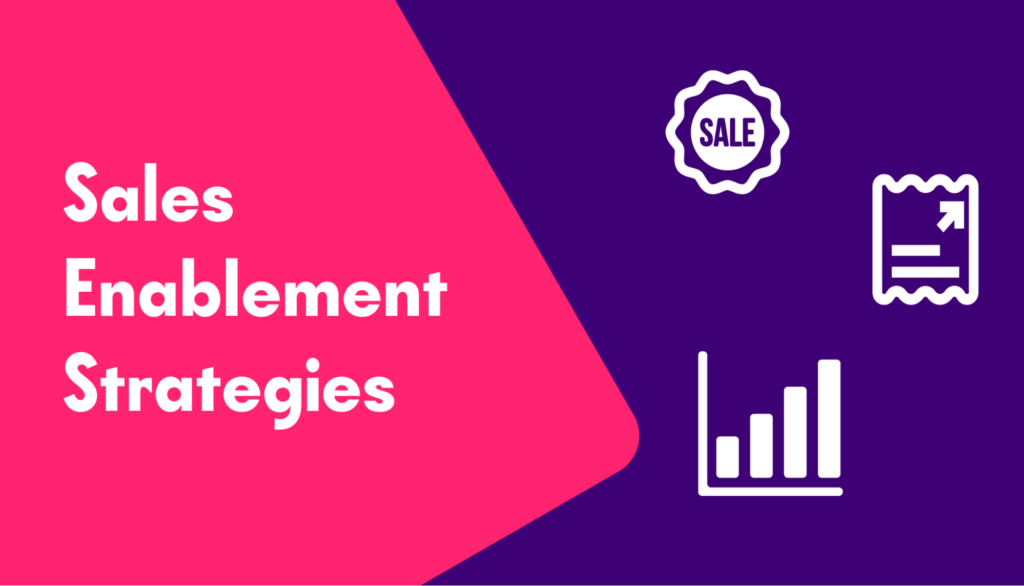
Great sales training programs can make reps better sellers. But getting the desired results — like improved rep productivity and market growth — takes more than traditional training. It takes a sales enablement strategy.
A sales enablement strategy is a plan to help your sales reps better understand and use your sales processes. It delivers the data and insights reps need to be effective in today’s B2B climate and perform to the best of their abilities.
The best strategies result in more revenue moving through your pipeline thanks to faster onboarding, more reps hitting quota, better engagement, and higher productivity.
In this article, we break down why a sales enablement strategy is essential to your organization and outline the features it should include.
What is a sales enablement strategy?
Your sales enablement team provides the sales team with everything they need to sell more effectively, including content, tools, knowledge, and training. It’s offered from the moment each sales rep is brought on board and continues throughout their selling experience.
Your sales enablement strategy is your plan to deliver all of this efficiently and effectively.
Why is a sales enablement strategy essential?
Sales enablement isn’t a nice-to-have — it’s a core function of every effective sales department.
Here’s what having a sales enablement playbook can help you accomplish:
Help reps understand the sales process
The best sales processes (and reps) cater to buyer expectations, and these are only increasing with every passing year. In fact, 87 percent of business buyers expect sales reps to be their trusted advisers. Despite this, sales reps spend less than 30 percent of their time selling, and deals are becoming more complex.
According to Gartner, the average enterprise B2B buying group involves stakeholders from five distinct business functions. How can your sales reps possibly deliver across multiple departments so every stakeholder sees the value of your solution?
Most reps need to boost their proficiency before becoming that “trusted adviser.” A strong sales enablement strategy can provide the knowledge and confidence your reps need to sell effectively at this level.
Streamline sales and boost revenue
Sales enablement’s well-chosen solutions (software, etc.) can boost your team’s revenue by helping sales reps streamline their processes. This means they can deliver the buyer experience that today’s decision-makers want — one in which reps deliver immense value by providing context and clarity to the research buyers have done independently. With the right data and insights, reps can provide value faster, leading to more closed-won deals.
Sales enablement and sales effectiveness go hand in hand:
According to G2, sales enablement has experienced explosive growth with a 343 percent increase in adoption over the last five years. Organizations with enablement report, on average, 31 percent improvement in supporting changes in sales messaging and 15 percent improvement in low-performing salespeople.
Marcela Piñeros, Global Head of Sales Enablement, Stripe
Gong Reveal Podcast: How to make enablement your predictability superpower
Retain sales talent
Most sales professionals are actively searching for a new role. Research by Gartner found that 89 percent of sales reps reported feeling burned out, and over half were actively seeking new jobs. Another study confirmed annual turnover on sales teams was higher than one-third.
If you don’t want to lose your top sellers, you need to support them with training, coaching, and tools that enable their success. Develop and implement a robust sales enablement strategy so your reps spend more time selling, close more deals, and earn more commission.
In short, sales enablement is critical to a revenue organization’s employee retention and overall success.
How to create a winning sales enablement strategy
You must take the following actions if you want to create a winning sales enablement strategy:
- Define clear goals
- Create a best-in-class onboarding program alongside training and sales funnel materials
- Use automated processes and tools
- Support your strategic initiatives
- Provide regular evaluation and coaching
- Make data-backed iterations to your sales process
- Conduct regular evaluations of your sales enablement strategy
Let’s look at each of them in turn:
1. Define clear goals
Every sales enablement strategy needs a set of clearly defined sales enablement goals. We recommend basing your goals on your team’s ever-shifting pain points.
Specify what you’re trying to accomplish and who’s involved, and define the sales enablement function. What’s its reason for being (mission), and what will success look like (vision)?
Once you document your sales enablement goals, it’s time to clearly define their resource requirements, beneficiaries, end users, and key stakeholders.
Meet with those involved to answer questions, address concerns, and ensure everyone is on the same page. This includes C-suite colleagues, and other departments that will interact with and support sales enablement.
For example, product management and marketing teams must work closely together to prioritize and roll out new features. In turn, enablement teams need up-to-date sales collateral and product training for reps.
And you’ll need to roll out more than just new features — new market positioning, GTM programs, or product messaging should accompany them.
Set a sales enablement charter
Create a sales enablement charter that describes what your organization’s sales enablement function will do (by whom and for whom), who will be involved, and how success will be measured.
How will you measure both sales’s success and sales enablement’s effectiveness?
Create KPIs
For instance, you can track a range of sales key performance indicators (KPIs) to identify issues with your reps’ performance and sales pipeline. Maybe reps spend too long discussing features instead of value, or lose too many accounts in the negotiation stage of your sales funnel.
Next, tie those issues to particular behaviors and set goals for improving them. For example, you could commit to creating a training program focused on value-based selling, or you might teach reps better negotiation skills.
2. Create a best-in-class onboarding program alongside training and sales funnel materials
Onboarding program
A key goal of any solid onboarding program is reducing new rep ramp time. This means cutting the time it takes for new reps to land their first deal.
The sooner a salesperson starts closing deals, the happier they will be, the better off your team will be, and the faster you’ll hit your sales goals.
The shorter your onboarding ramp time, the more revenue new reps can generate. The chart above shows the potential difference of more than $80,000 between a seven-month and a five-month onboarding time. That’s why it’s critical to ensure that your onboarding program runs smoothly.
Ideal customer profile (ICP)
Your sales ICP must consider the main attributes of the companies and personas to which you sell. Work to develop something like this image:
Answer several questions as you create this profile:
- Who are your ideal customers and potential customers?
- What industry are they in?
- Where are they based?
- Why do they need or want your product?
- Which features will they value most?
- What are their pain points?
- What tools or software do they currently use?
Like your ICP, it’s essential to define your buyer personas — their goals, challenges, and how your organization can help them.
You should also think about (and document) who not to target.
Training materials: Email and call scripts
Create sales scripts that new hires can use to engage in successful customer conversations. They’re living templates to guide your reps, so encourage reps to use them in a way that feels natural, but that sticks to the script overall and conveys its most critical information.
Scripts help ensure consistency and on-point messaging. They are guideposts that help sellers know what works and what doesn’t.
Pair these with best-in-class examples of recorded calls and customers’ stories.
- Offer your reps both email templates and call scripts.
Email templates should be customized to different sales cycle stages, buyer personas, and industries.
Call scripts serve as guides for running effective web meetings or phone calls, and will need to be tailored to every type of call your reps run (cold calls, discovery calls, demo calls, proposal calls, etc.).
Here’s an example of a few lines from a simple call script:
In my role at [YOUR COMPANY], I speak with [PERSONA] like you at companies like [SIMILAR COMPANIES] every day, and I hear they are struggling with [PROBLEM A, PROBLEM B, and PROBLEM C]. To what extent does that sound like your world?
One type of call script is the demo script — the starting points for conducting an effective demo of your product or service. These can live in PowerPoint/Google slides or various one-pagers internal to your company. No matter where they exist or in what format, up-to-date demo scripts ensure that your sales reps are on target as your product evolves with new and enhanced features.
Note: Email and call scripts are essential for new sales reps. Since no product or service is static, all scripts should be updated regularly so reps always have the latest information.
Sales funnel collateral
As you onboard new reps, it’s essential that they understand your sales process and the relevant collateral that accompanies it at every stage.
Provide them with content (one-pagers, customer stories, guides, etc.) that will help them win over buyers at each stage of the process.
Make sure they understand how to present the value contained in each piece of content (consider creating enablement packs for your collateral), and how it supports that specific buyer in addressing their pain points.
3. Use automated processes and tools
The more details and context reps can provide about a product, the more confident buyers are about its perceived value — and their decision to purchase. The right sales enablement solutions support reps by giving them this context via training and ongoing AI insights into the buyer and the rep throughout the sales process. To accelerate win rates, provide your reps with as much context as possible using the following training and AI mechanisms in your sales enablement:
Objection handling training
Stop losing deals to the same objections.
Gong Labs analyzed 300M+ cold calls to identify the most common objections and the most effective tactics for handling them.
However you train your reps to handle objections, make sure you include training to slow things down. The best sales reps take their time responding to objections, speaking at an average of 176 words per minute:
Track this critical stat using an AI-backed solution that captures customer interaction data. You should also make sure that reps, managers, and enablement can easily access this stat at the team and individual level.
Battle Cards
Battle cards provide vital information your sellers need about the competition. They typically outline the differences between your products, and highlights of each one for a given market. Include the following information on a battle card for each competitor:
- Company name
- Pricing
- Differentiators
- Use cases
- PROOF: Customer stories, reviews, case studies, or other information that position your product over the competition
- BONUS: Provide your buyers with “landmine questions,” that is, questions that will be difficult for competitors to answer if buyers ask them.
If you need a template, try our Sales Battle Card Template for Ultra-Competitive Deals.
Demandbase, a three-time Gartner Magic Quadrant leader for account-based marketing platforms, used Gong’s AI to surface competitor mentions and notify managers when competitors come up. They also use trackers to uncover how top sales reps handle competition-related objections, and they share those with the rest of the team.
In doing so, Demandbase increased its annual contract value by 25 percent in some segments, reduced onboarding time by 15 percent, and bumped competitive win rates by 11 percent.
Understandably, Demandbase completely reconstructed its sales process based on these results. Jay Tuel, VP of Strategy, Revenue Enablement, and Sales Development, says, “This real-time, real-world competitive intelligence is nearly impossible to gain without Gong.”
Sales documentation
Readily available and up-to-date sales documentation boosts sales effectiveness, and should include the following:
- Price sheets: Pricing is different in every organization. Some companies are very open about pricing and list it on their website, while others keep it confidential. Either way, sales reps need to know your pricing structure.
If your pricing changes, update your price sheet immediately and make sure reps know about and changes. Also, if reps can offer discounts without involving a manager, note those details on your price sheet.
- Product and feature listings: Nothing is more awkward during a sales call than saying, “I don’t know,” when asked about a specific product or feature. Worse yet is saying, “Yes, we can do that,” only to backtrack on the next call. Make sure your sales reps thoroughly understand your products and features. More importantly, make sure they understand the customer problems that they solve. Provide training to ensure that they do.
- Technical questions: Your reps should be able to provide clear, accurate responses to basic technical questions, but when customers with specialized knowledge or detailed implementation questions are on a call, have your technical people there too. If your specialists aren’t on the call, make sure your sellers know how to access them quickly for immediate follow up.
Winning talk tracks
Using the right talk tracks can help your sales teams increase win rates. Your teams need data, not just gut feel, to know which talk tracks work and which ones don’t.
Gong captures customer interactions and understands which talk tracks work to move deals forward so your team can build, improve, use, and scale the best ones.
4. Support Your Strategic Initiatives
An effective sales enablement strategy should accelerate strategic initiatives, specifically, your go-to-market (GTM) initiatives.
Because sales teams are on the front lines, they must be well-versed in and buy into each aspect of new strategic initiatives so they can drive them forward.
You’ll want to provide your sales team with training about why the initiative matters, and why they should stick with your chosen approach. You’ll also want to offer them new and updated talk tracks.
Do that for new GTM initiatives, each time your product or its features evolve, or when you enter new verticals and exit old ones.
5. Provide regular evaluation and coaching
With the right approach to sales enablement, you can begin to cultivate an authentic peer-to-peer learning culture at your organization.
Say, for example, that your sales team consists of entry-level reps, junior sales reps, and veterans. The good news is that everyone has something valuable to share and something valuable to learn.
But how do you ensure that knowledge is shared across the entire team? You use Call Libraries.
Call Libraries
Empower reps to listen, learn, and replicate the behaviors of top reps in your organization. Having the opportunity to hear the best calls made by your A-players allows other reps to replicate winning behaviors. They’ll pick up on skills like this:
Gong’s Call Libraries help keep calls organized and easily accessible. You can sort calls into folders and subfolders by vertical, company size, contact, pipeline stage, or other category. This makes it easy for new reps to listen to best-in-class sales cycles from start to finish, at their convenience.
6. Make data-backed iterations to your sales process
Data is critical to your sales enablement strategy as it can:
- Show you where your team is struggling so you know where to focus your training
- Measure how effective your training is and spot team members who need additional support
- Calculate your enablement strategy’s ROI so you can prove its impact on the bottom line
Here are a few examples of where you can put data to work and use it to boost win rates::
Ramp time: Use data to measure each rep’s time to land their first deal. Get more granular by sorting ramp times by cohort, experience level, time in training, etc.
Deal cycle speed: Use data to measure how long it takes to close a deal on average. How does each cohort’s deal cycle speed compare to the rest of the sales organization? Are deals closing faster with each new onboarding class? You can also use data to understand why some reps close deals faster than others. For example, reps who close faster spend more time on next steps.
Talk track adoption: Use data automation to see if reps use their new talk tracks. Create alerts using trackers to learn which reps are (or aren’t) weaving new talk tracks into their conversations. You can also use data to understand how this impacts close rate and deal size. Target refreshers where and when they’re needed most.
Peer-to-peer learning: Use data to see who is listening to calls, which reps are giving feedback, and who is working to better their performance. This is behavior you should celebrate and encourage.
7. Conduct regular evaluations of your sales enablement strategy
You’ll need to keep track of the impact of your sales enablement strategy to determine whether it’s working as planned. To understand your strategy’s impact, you’ll want a combination of quantitative and qualitative data.
Monitor your progress with data-driven sales reports. Pay attention to typical sales enablement metrics and KPIs, including:
- Win rate, average selling price, and average sales cycle
- Pipeline created, qualified, and closed
- Actual sales vs forecast
Identify and track metrics that relate to the specific sales behaviors you want to change. For example, if you want to increase the number of deals your reps convert, track a metric like deals lost by pipeline stage.
Collect feedback about new sales enablement collateral and how well it’s working. Look at numbers like downloads and related MQLs to see if it’s having an impact.
What is sales enablement maturity?
Mary Shea of Forrester says that “When we looked at sales enablement maturity, we found a direct correlation between organizations’ maturity level in terms of their ability to deliver sales enablement and the ability to drive revenue.”
B2B customers now expect the same buying experiences they enjoy as individuals in B2C channels. They want it to be frictionless and personalized, and they expect sellers to have an Amazon-like familiarity with their needs.
Getting there requires high-quality sales enablement and high adoption rates. You can measure it all using AI-driven data.
How mature is your sales enablement process?
Sales enablement isn’t a one-time initiative. A well-defined sales enablement process provides the structure to continually improve your sales process.
Maturity models in many disciplines have five levels, including Carnegie Mellon’s for software engineering and Gartner’s for manufacturing. Highspot, a Gong integration partner for content management, defines the five stages of sales enablement maturity as:
- First steps
- Structured
- Rigorous
- Action-based
- Value-driven
As they put it, a more mature sales enablement team is “a proven driver of systemic change and a trusted partner in business leadership.” At the value-driven level, the team “leverages data to fine-tune processes and assist sellers in delivering targeted business outcomes.”
On most teams today, there’s significant room for improvement when it comes to enablement. A Gartner survey of 213 senior sales executives revealed that 82 percent said sales enablement must change considerably to meet future revenue goals. It urged CSOs to move away from just providing training, and focus on making changes to their sellers’ behaviors.
Consider, for example, Sprout Social, a worldwide social media optimization platform that wanted to implement a sales training methodology. The methodology focused on coaching sales teams to ask the right questions rather than jumping in too quickly with answers.
They created several Gong trackers to uncover how reps used the techniques taught in the new methodology. Based on the results, leadership provided more effective coaching.
Within the first five months, Gong’s insights and leadership coaching led to a 40 percent increase in sales methodology adoption on discovery calls and a 51 percent gain in closed-won deals. Gong’s deal execution insights now allow Sprout Social to diagnose deal health and sales funnel issues in real time.
But Sprout didn’t stop at its sales team. As Marshall Hamilton, Sprout Social’s Director, Business Systems Operations, said, “Marketing wanted to use Gong to better understand the customer’s voice. The product team wanted to get more engaged with customer-facing feedback. I started getting pinged left and right by other teams in the organization. To this day, as new teams are formed, they ask to use Gong.”
Make sales enablement easy with Gong
Sales enablement leaders play a critical organizational role in promoting and adopting new technology that can enable a sales enablement strategy. That’s incredibly important given that such a strategy can supercharge your sales reps’ efforts and drive revenue growth alongside increased productivity. Creating and executing that strategy shouldn’t be intimidating or complicated.
Innovative sales leaders use Gong’s Revenue AI Platform to speed up onboarding, monitor talk track adoption, uncover teachable moments, and increase sales productivity. These capabilities are available to sales enablement leaders in any stage of growth with Gong’s scalable platform.
Discover how to stay on top of your sales enablement efforts by booking a demo today.
This content was originally published by Jonathan Costet in January 2023. With collaboration from Hugh Robbins, this content was refreshed and re-published in April 2025.

